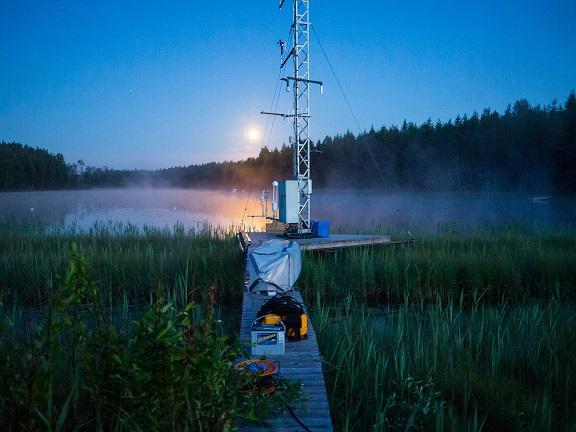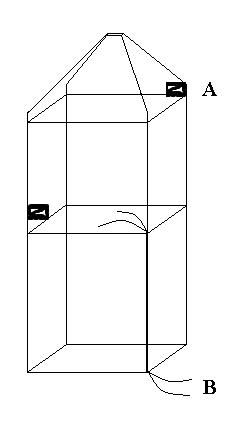Method
Study sites
This field study was carried out during June to October 2014 in Lake Erssjön and Lake Följesjön located in the Skogaryd Research Catchment Area. Both lakes are located in the boreonemoral zone in the South West of Sweden. Lake Erssjön is a small open water lake (6.2 ha) with a mean depth of 1.7 m. Lake Följesjön on the other hand, is more vegetated, smaller (3.8 ha) and shallower with a mean depth of 0.5 m.
CH4 fluxes were measured from three sites, located in the north part of Lake Erssjön. Each site was dominated by one species; P. australis, E. fluviatile or C. rostrata. In Lake Följesjön the two measuring sites were placed in the middle of the lake, each dominated either by P. australis or C. rostrata. Measurements were conducted every second hour during 24 h, every thirty day from June to October.

Measurement
A closed-chamber method was used to collect CH 4 gas from the emergent aquatic macrophytes. The chamber (d 43 cm, w 43 cm, h 137.5 cm: volume 197.4 L) was made of plastic pipes, builds in a rectangle block shape (Figure 1) and covered with transparent airtight plastic. The chamber was then used to cover a stand of emergent aquatic macrophytes in order to collect the gas. The chamber was equipped with two computer CPU fans, run with 12 V batteries for air circulation and a thermometer to measure the temperature inside the chamber. Gas was sampled from the inside of the chamber through two transparent PVC tubes. One end was attached inside the chamber and the other end in the LGR (Los Gatos Research (LGR) Ultraportable Greenhouse Gas Analyser, UGGA), one tube for entering air and the other for outgoing air. Concentrations of CH4 were immediately measured and logged with the LGR. Measurements were performed during five minutes on each plant site and every twenty-second, concentrations of CH4 were registered. Between measurements, the chamber was removed from the site and vented until the gas levels decreased to the same level as the surrounding air.
Environmental parameters
Air temperature (°C), relative humidity (%) and air pressure (mb) were measured outside the chamber, with a pocket weather station (Anemometer Silva ADC) on time during each five minutes measurement period. Wind speed (m/s) was obtained from a weather station near each lake. Light (incoming solar radiation) was measured with a PAR sensor (HOBO Photosynthetic Active Light Smart Sensor).

Responsible for this page:
Director of undergraduate studies Biology
Last updated:
05/26/15
